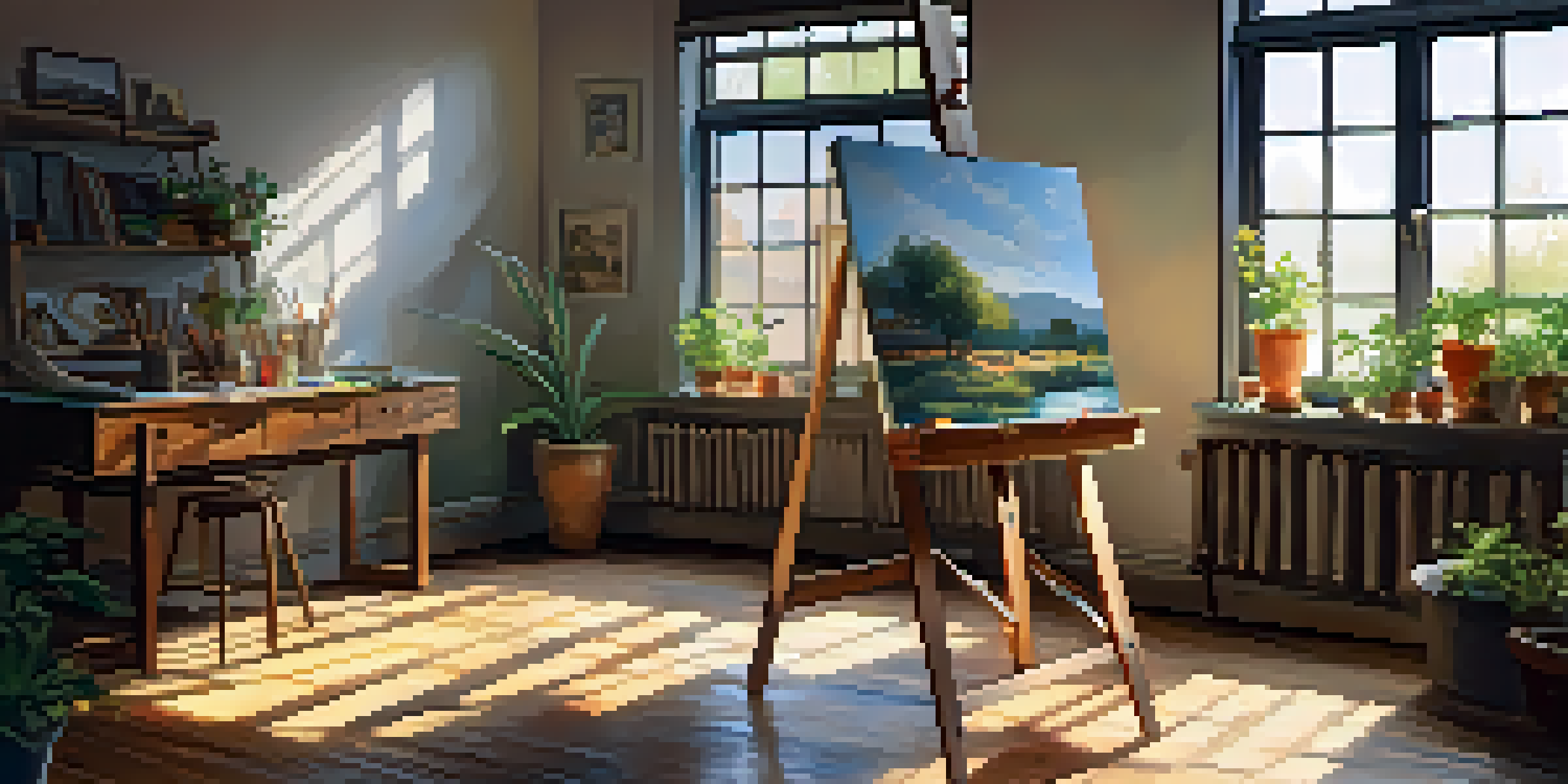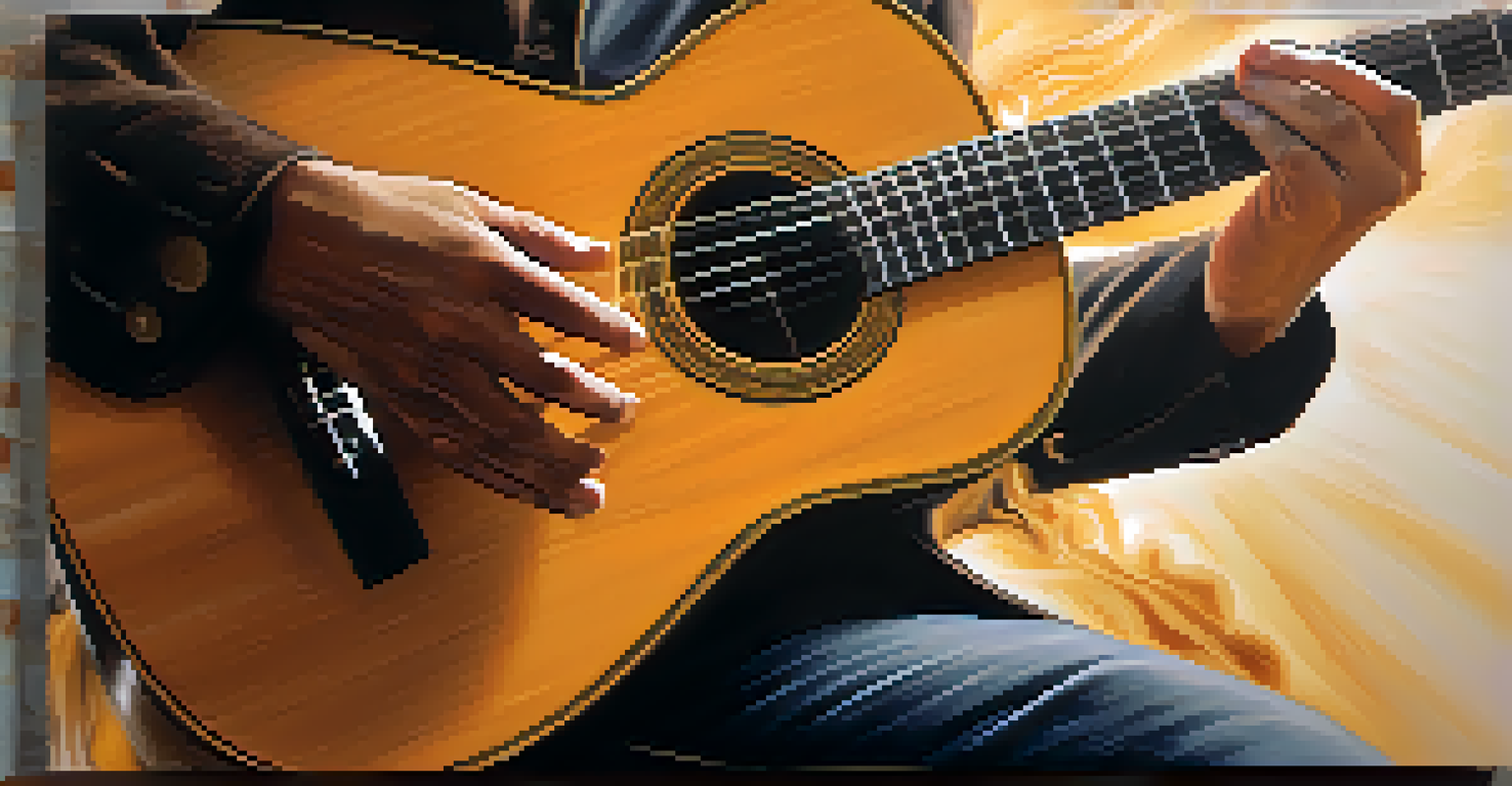Marijuana Use Among Artists: A Study of Creative Benefits

Understanding Marijuana: A Brief Overview
Marijuana, often referred to as cannabis, is a plant used for both medicinal and recreational purposes. It's known for its psychoactive properties, primarily due to a compound called THC (tetrahydrocannabinol). Many people use marijuana to relax, relieve stress, or enhance their sensory experiences. But how does it influence creativity, particularly among artists?
Creativity is not a competition; it’s a gift that we cultivate in our own unique ways.
The relationship between marijuana and creativity has intrigued researchers and artists alike. Some claim that it helps unlock new perspectives and ideas, while others argue it can induce a mental fog. Understanding this balance is crucial for artists who seek inspiration in their work.
In this article, we'll delve into various studies and anecdotal evidence that explore the creative benefits of marijuana. By examining the experiences of artists from different disciplines, we aim to provide a clearer picture of how cannabis may influence the creative process.
Historical Context: Artists and Marijuana
Historically, many influential artists have embraced marijuana as part of their creative ritual. For instance, renowned figures like Pablo Picasso and Bob Marley are often associated with cannabis culture, suggesting that it played a role in their artistic expression. This historical context highlights the longstanding relationship between creativity and marijuana use.

Art movements such as Surrealism and Beat Generation often celebrated altered states of consciousness, with marijuana frequently used to enhance those experiences. This raises questions about whether these artists would have produced the same groundbreaking work without the influence of cannabis.
Marijuana's Role in Creativity
Many artists find that marijuana enhances their creative processes, offering new perspectives and reducing self-criticism.
By exploring this historical backdrop, we can better understand how marijuana has shaped the creative landscape over the years. The stories of these artists serve as a testament to the potential benefits of using cannabis in the pursuit of creativity.
The Science Behind Creativity and Cannabis
Recent studies have begun to uncover the scientific relationship between cannabis use and creativity. Some research suggests that THC may enhance divergent thinking, which is the ability to generate many unique ideas. This cognitive flexibility can be a valuable asset for artists looking to push boundaries in their work.
Marijuana enhances my ability to think outside the box; it opens the doors to my imagination.
Additionally, marijuana may help reduce anxiety and self-criticism, allowing artists to explore their ideas without fear of judgment. This freeing effect can lead to a more open-minded approach to creativity, fostering an environment where innovation thrives.
However, it's essential to note that not everyone experiences these benefits. For some, cannabis can inhibit focus and clarity, making it a double-edged sword in the creative process. Understanding these nuances is key for artists considering marijuana as part of their toolkit.
Personal Experiences: Artists Share Their Stories
Many artists have shared personal anecdotes about how marijuana has influenced their creative journeys. For example, a painter might describe how a relaxed state of mind allowed them to experiment with colors and techniques they hadn't previously considered. These stories highlight the subjective nature of creativity and the role of cannabis in fostering unique artistic expressions.
Musicians, too, often report that marijuana enhances their musical creativity, leading to spontaneous jam sessions and innovative songwriting. The rhythmic flow and heightened sensory perception can create a space where musical ideas come to life more effortlessly.
Historical Influence of Cannabis
Throughout history, influential artists like Picasso and Marley have integrated marijuana into their creative rituals, highlighting its longstanding connection to artistic expression.
These personal experiences underscore the idea that while marijuana may not be a universal catalyst for creativity, it can serve as a valuable tool for many artists. Listening to these stories helps paint a fuller picture of the complex relationship between cannabis and creative expression.
The Risks of Marijuana Use for Artists
While there are potential benefits to using marijuana, it's crucial to acknowledge the risks involved. Some artists may find that cannabis use leads to dependency, negatively impacting their ability to create. This can create a paradox where they rely on marijuana for inspiration but ultimately find it hinders their productivity.
Additionally, marijuana can impair cognitive function and focus, which are vital for many artistic endeavors. This is particularly relevant for visual artists who need precision in their work and musicians who require a clear sense of rhythm and timing.
Balancing these risks with the potential benefits is essential for artists. By approaching cannabis use with mindfulness and awareness, they can make informed decisions about its role in their creative processes.
Cultural Perspectives on Cannabis and Creativity
Cultural perceptions of marijuana vary widely, influencing how artists view its use in their creative processes. In some cultures, cannabis is celebrated as a source of inspiration, while in others, it may carry stigma. This dichotomy shapes the discourse around marijuana and its role in artistic expression.
For instance, in the music scene, particularly within genres like reggae and hip-hop, cannabis is often intertwined with creativity and self-expression. Artists from these backgrounds frequently embrace marijuana as part of their identity, enhancing their art and connecting with their audience.
Balancing Benefits and Risks
While cannabis can inspire creativity, artists must be mindful of its potential risks, including dependency and impaired focus.
Understanding these cultural perspectives can provide deeper insights into the ongoing conversation about marijuana and creativity. It emphasizes that the relationship is not only personal but also shaped by societal norms and values.
Conclusion: Finding the Balance in Creativity
As we've explored, the relationship between marijuana use and creativity is complex and multifaceted. While many artists report enhanced creativity and inspiration through cannabis, others may encounter challenges that hinder their artistic expression. It's crucial for artists to find their balance, recognizing how marijuana fits into their unique creative processes.
Ultimately, the decision to incorporate marijuana into one's artistic practice is a personal one, influenced by individual experiences and cultural backgrounds. Artists should approach this choice with an open mind, weighing the potential benefits against the risks.

In conclusion, whether as a source of inspiration or a hindrance, marijuana will continue to be a topic of interest among artists. By fostering an informed and nuanced conversation, we can better appreciate the diverse ways it influences creativity in the arts.